Coupling Characteristics of Creep Fracture of Rock Foundation on Wind Turbine under Wind-Induced Vibration
Abstract
:1. Introduction
2. Mechanical Analysis of Rock Foundation under Wind Load
2.1. Wind Load
2.2. Wind Vibration Model
2.3. Load Calculation of Rock Foundation
3. Fracture Characteristics of Fractured Rock Foundation
4. Coupling Characteristics of Creep Fracture
4.1. Nonlinear Creep Analysis
4.2. Coupling Characteristics of Creep Fracture
5. Example Analysis
6. Conclusions
Author Contributions
Funding
Institutional Review Board Statement
Informed Consent Statement
Data Availability Statement
Conflicts of Interest
References
- Chen, R.; Xue, S.T.; Wang, Y.G.; Qin, L. Effects of soil-structure interaction on the responses of structure to wind-induced vibration. Chin. J. Rock Mech. Eng. 2003, 22, 309–315. [Google Scholar] [CrossRef]
- Veletsos, A.S.; Verbic, B. Vibration of Viscoelastic foundation. Earthq. Eng. Struct. Dyn. 1973, 2, 87–102. [Google Scholar] [CrossRef]
- Zhang, B.; Ren, H.H.; Chen, W.L.; Li, Q. Wind field simulation of Jjianshan area under complex terrain. J. Nat. Diasters 2017, 26, 22–31. [Google Scholar] [CrossRef]
- Lian, S.; Li, J.; Gan, F.; Bi, J.; Wang, C.; Zheng, K. Investigation of the shear mechanicalbehavior of sandstone with unloading normal stress after freezing-thawing cycles. Machines 2021, 9, 339. [Google Scholar] [CrossRef]
- Yang, W.G.; Wang, Z.Q.; Zhu, B.W.; Qi, L.Z. Time history analysis on wind-induced response of UHV guyed single-mast transmission-line system. Proc. CSCE 2015, 3, 3182–3191. [Google Scholar] [CrossRef]
- Fang, C.X.; Chen, R.; Xue, S.T. Effect of pile-soil-structure interaction on downwind response of highrise building to wind-induced vibration. Chin. J. Rock Mech. Eng. 2004, 23, 2078–2084. [Google Scholar]
- Feng, Y.J.; Su, H.J.; Nie, Y.J.; Zhao, H.H. Role of cyclic thermal shocks on the physical and mechanical responses of white marble. Machines 2022, 10, 58. [Google Scholar] [CrossRef]
- Zhao, Y.L.; Wang, Y.X.; Wang, W.J.; Tang, L.M.; Liu, Q.; Cheng, G. Modeling of rheological fracture behavior of rock cracks subjected to hydraulic pressure and far field stresses. Theor. Appl. Fract. Mech. 2019, 101, 59–66. [Google Scholar] [CrossRef]
- Hao, Y.L.; Wang, Y.X.; Wang, W.J. Modeling of non-linear rheological behavior of hard rock using triaxial rheological experiment. Int. J. Rock Mech. Min. Sci. 2017, 93, 66–75. [Google Scholar] [CrossRef]
- Yuan, H.P.; Zhao, P.; Wang, Y.X.; Zhou, H.L.; Luo, Y.H.; Guo, P.P. Mechanism of deformation compatibility and pile foundation optimum for long-span tower foundation in flood-plain deposit zone. Int. J. Civ. Eng. 2017, 15, 887–894. [Google Scholar] [CrossRef]
- Liu, J.; Cao, P.; Han, D.Y. Sequential Indentation Tests to Investigate the Influence of Confining Stress on Rock Breakage by Tunnel Boring Machine Cutter in a Biaxial State. Rock Mech. Rock Eng. 2016, 49, 1479–1495. [Google Scholar] [CrossRef]
- Guo, Y.; Sun, B.N.; Ye, Y.; Lou, W.J.; Shen, G.H. Frequency-domain analysis on wind-induced dynamic response and vibration control of long span transmission line system. Acta Aerodyn. Sin. 2009, 27, 288–295. [Google Scholar]
- Li, Y.G.; Li, Q.S. Influence of fundamental mode shapes onequivalent static wind loads of tall buildings. Earthq. Eng. Eng. Dyn. 2016, 36, 38–44. [Google Scholar] [CrossRef]
- Zhang, W.F.; Ma, C.H. Notes on power spectrum density and wind-velocity PSD. Chin. J. Comput. Mech. 2008, 25, 474–477. [Google Scholar]
- Yang, X.L.; Liu, Z.A. Reliability analysis of three-dimensional rock slope. Geomech. Eng. 2018, 15, 1183–1191. [Google Scholar] [CrossRef]
- Zhang, C.Y.; Pu, C.Z.; Cao, R.H. The stability and roof-support optimization of roadways passing through unfavorable geological bodies using advanced detection and monitoring methods among others in the Sanmenxia Bauxite Mine in China’s Henan Province. Bull. Eng. Geol. Environ. 2019, 78, 5087–5099. [Google Scholar] [CrossRef]
- Hutchins, N.; Chauhan, K.; Marusic, I.; Monty, J.; Klewicki, J. Towards reconciling the large-scale structure of turbulent boundary layers in the atmospherd and laboratory. Bound.-Layer Meteorol. 2012, 145, 273–306. [Google Scholar] [CrossRef]
- Wang, Y.X.; Guo, P.P.; Ren, W.X.; Yuan, B.X. Laboratory investigation on strength characteristics of expansive soil treated with jute fiber reinforcement. Int. J. Geomechancis 2017, 17, 04017101. [Google Scholar] [CrossRef]
- Zhao, Y.L.; Zhang, L.Y.; Wang, W.J.; Wan, W.; Ma, W. Separation of elastoviscoplastic strains of rock and a nonlinear creep model. Int. J. Geomech. 2018, 18, 04017129. [Google Scholar] [CrossRef]

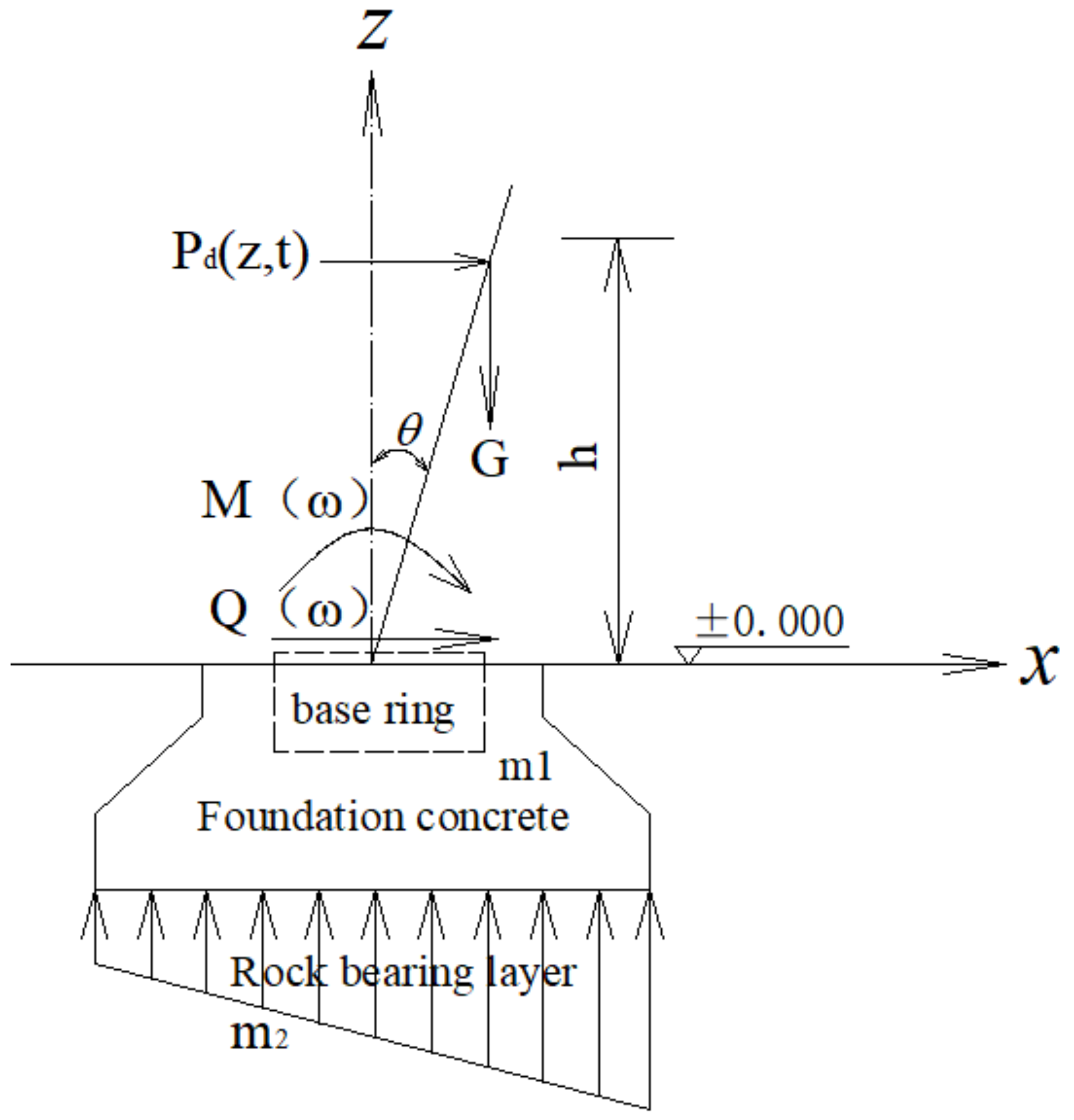


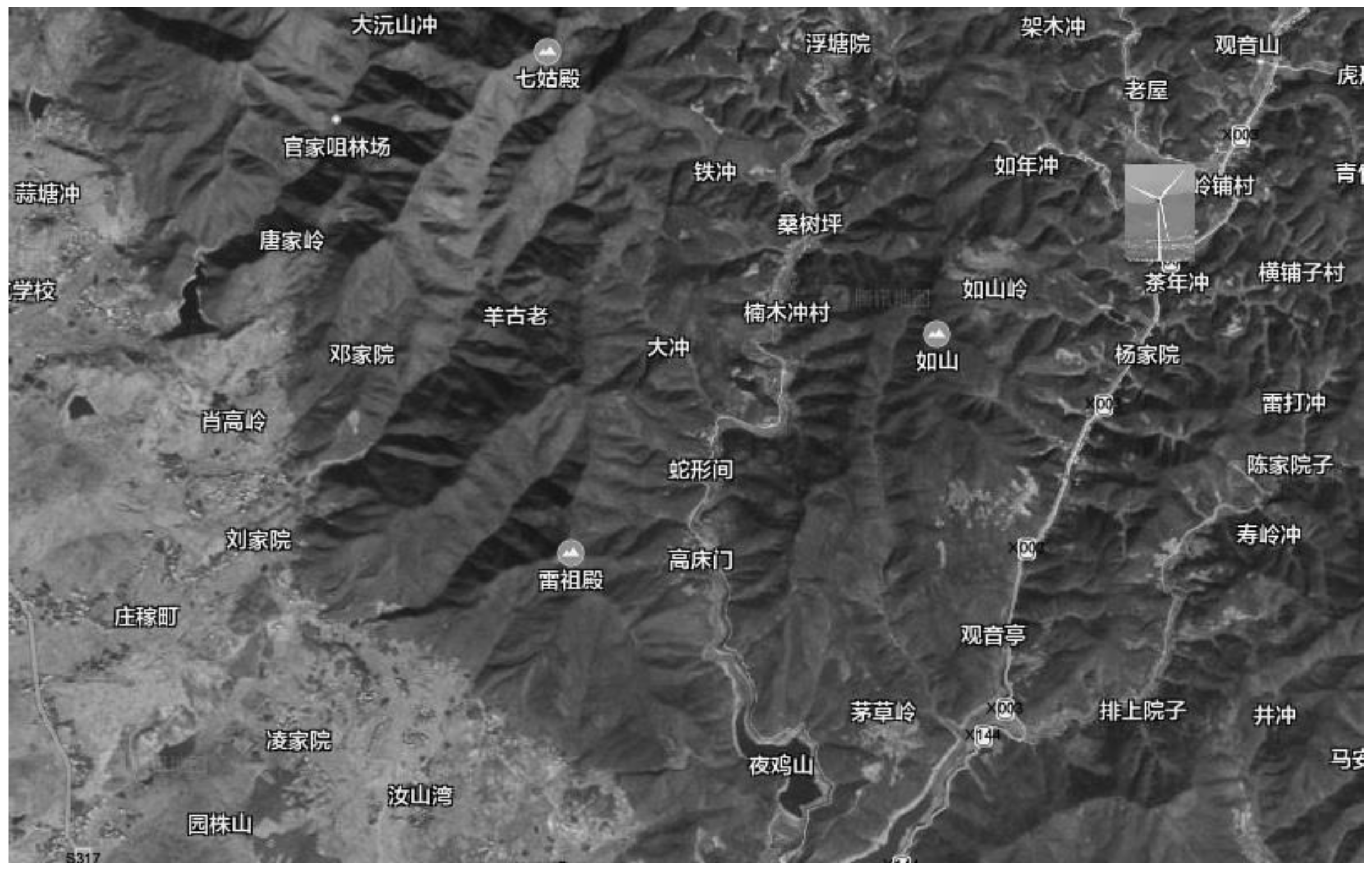


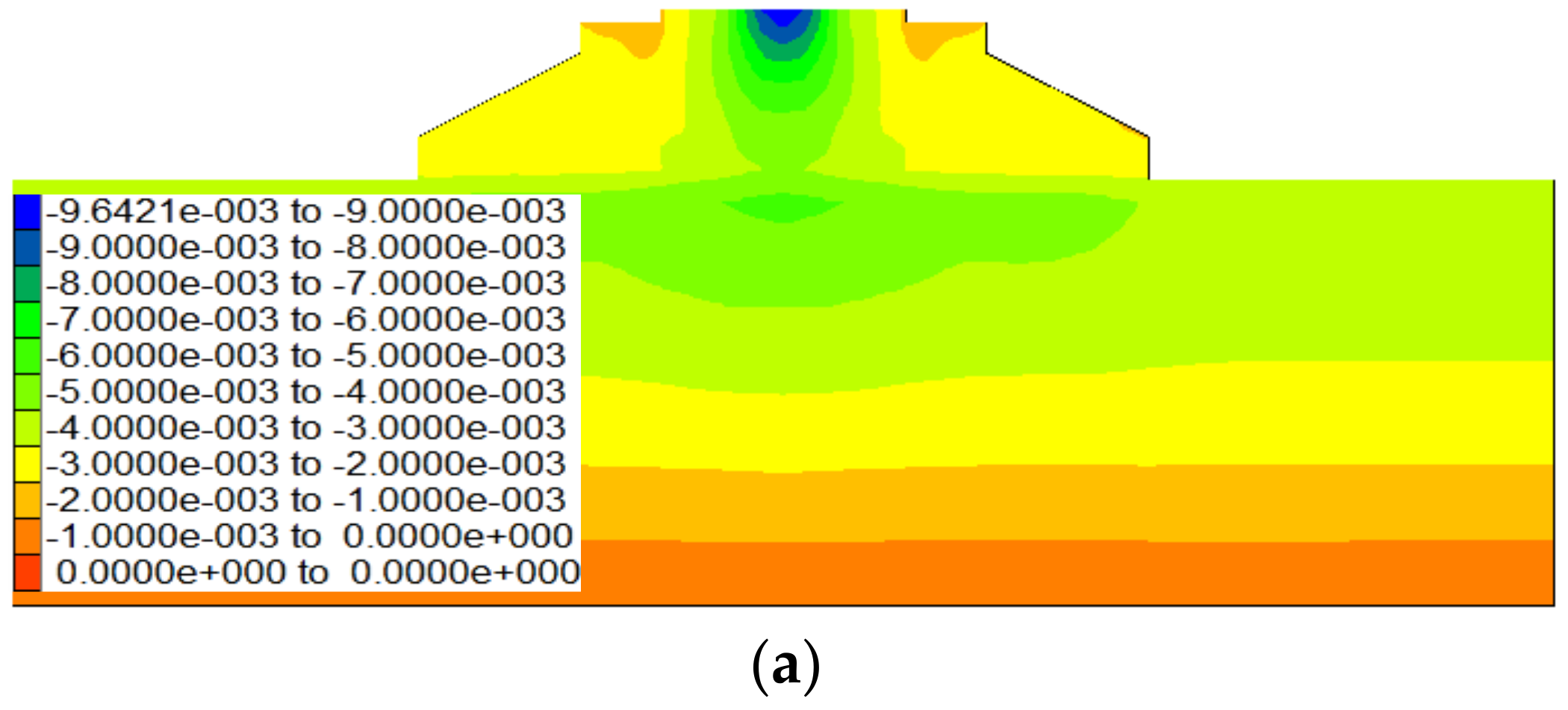

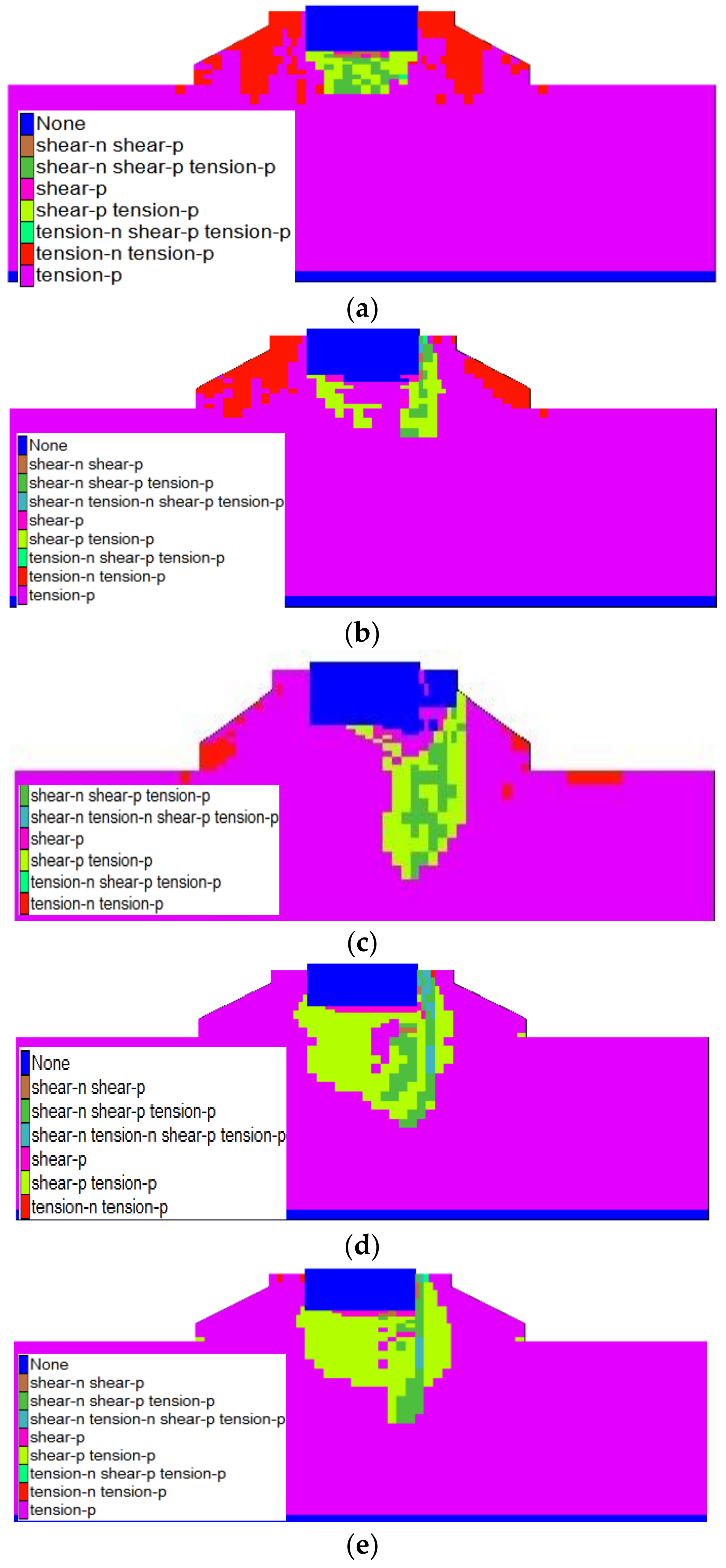
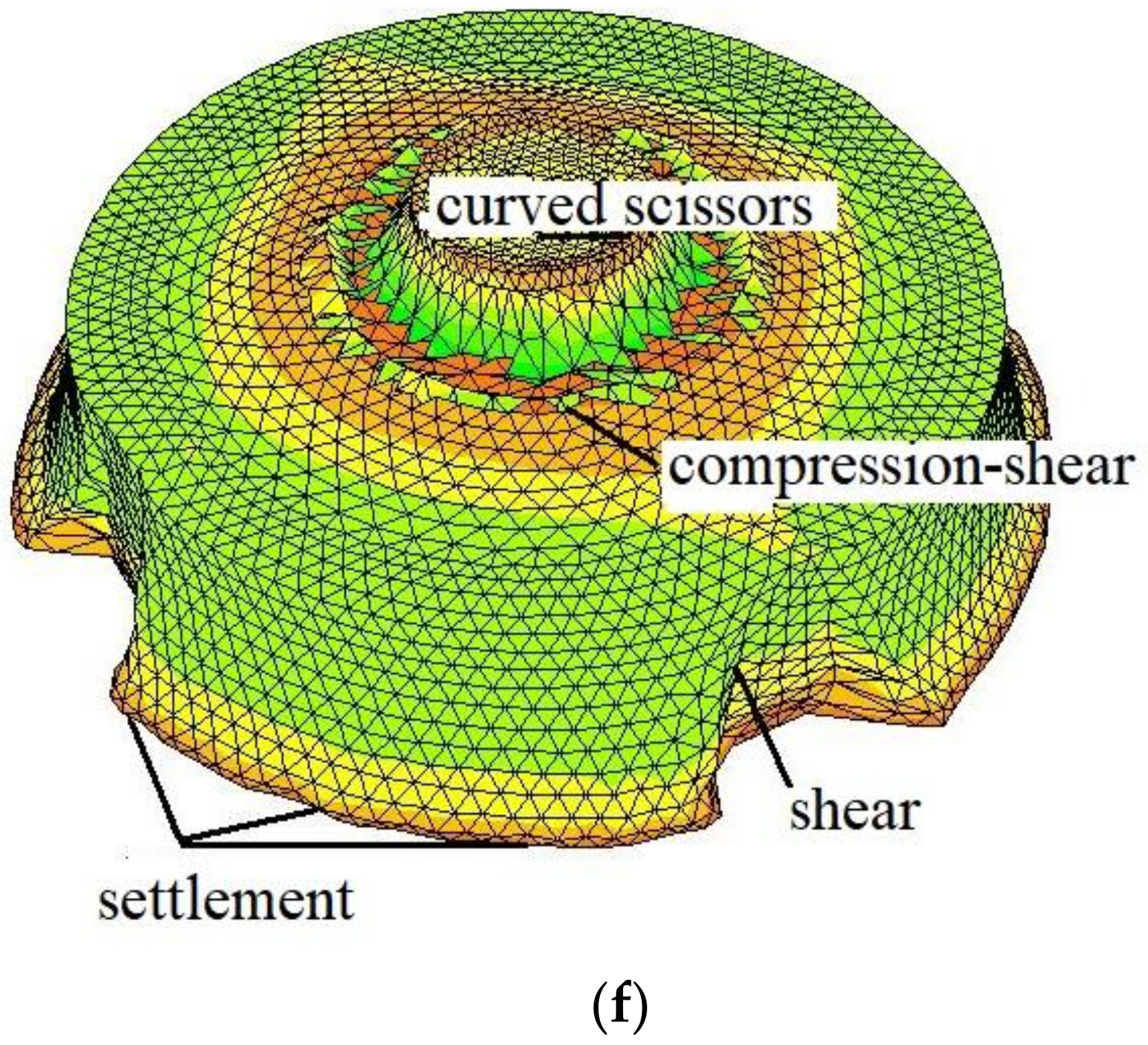
| Lithology | Weight /kN/m3 | Poisson’s Ratio | Rock Mass Strength Internal Friction Angle Cohesion /°/kPa | Elastic Modulus /GPa | Viscoelastic Modulus /GPa | Viscoelastic Coefficient /MPaˑd |
|---|---|---|---|---|---|---|
| sandstone | 26.5 | 0.25 | 44 1100 | 22 | 2.5 | 7.6 × 103 |
Publisher’s Note: MDPI stays neutral with regard to jurisdictional claims in published maps and institutional affiliations. |
© 2022 by the authors. Licensee MDPI, Basel, Switzerland. This article is an open access article distributed under the terms and conditions of the Creative Commons Attribution (CC BY) license (https://creativecommons.org/licenses/by/4.0/).
Share and Cite
Wang, J.; Nie, Z.; Cao, P. Coupling Characteristics of Creep Fracture of Rock Foundation on Wind Turbine under Wind-Induced Vibration. Energies 2022, 15, 3862. https://doi.org/10.3390/en15113862
Wang J, Nie Z, Cao P. Coupling Characteristics of Creep Fracture of Rock Foundation on Wind Turbine under Wind-Induced Vibration. Energies. 2022; 15(11):3862. https://doi.org/10.3390/en15113862
Chicago/Turabian StyleWang, Jun, Zhipeng Nie, and Ping Cao. 2022. "Coupling Characteristics of Creep Fracture of Rock Foundation on Wind Turbine under Wind-Induced Vibration" Energies 15, no. 11: 3862. https://doi.org/10.3390/en15113862






